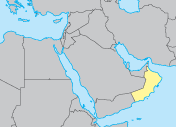Children of Oman
Realizing Children’s Rights in Oman
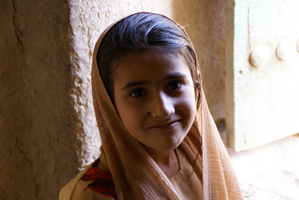
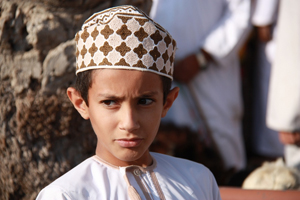
The Sultanate of Oman, which celebrated “The Year of the Child” in 2012, is one of the countries that have made the most progress in terms of life expectancy and quality of life over the last 40 years. A National Human Rights Commission has been set up and children have been able to benefit from it in areas of health and education. However, despite other improvements and bills aimed at increasing the protection of children, in reality many problems still exist.
Population: 3.1 million Life expectancy: 73 years |
A real problem in the dissemination of information on children’s rights
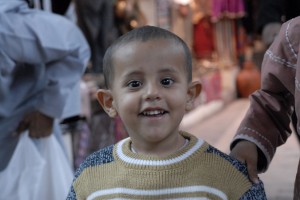 Legislation in the Sultanate increasingly takes into account the interests of the child and improves his protection in various areas.
Legislation in the Sultanate increasingly takes into account the interests of the child and improves his protection in various areas.
Nevertheless this is not sufficient to bring about change to traditions nor to make children’s rights a reality. The Sultanate has not yet allowed for several declared laws to become effective, such as the ban on child labour.
Moreover, shortcomings in the dissemination of information concerning rights of the child, notably in rural areas, have a considerably greater impact on the daily lives of children.
Finally, there is no real monitoring of adherence to these laws by the Sultanate and very few NGOs or associations are present in the country or report on this matter. The lack of data collected on many subjects affecting the children of the most vulnerable groups in society remains of great concern.
Violation of girls’ rights
Even if many restrictions and quotas have been suppressed, discrimination towards girls persists.
Family law
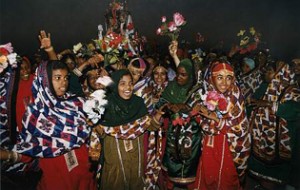 It would appear that there are many inequalities between boys and girls in family law, notably around inheritance.
It would appear that there are many inequalities between boys and girls in family law, notably around inheritance.
Concerns have been raised, notably by the Committee on the Rights of the Child concerning the fact that no inheritance is to be passed onto girls where the parents are divorced.
Female genital mutilations
Excision is also practised within some families, in accordance with tradition, although the government tends to ignore the existence of such practices.
Marriage of children and sexual exploitation
In 2005, 17% of young Omani women aged between 15 and 19 were married. Even though the legal age today is 18 years, customs and traditions mean that, in reality, young Omani girls marry before they reach this age.
People trafficking, for sexual exploitation and domestic work occurs both within Oman and passes through its borders. Cases of fake or forced marriage are often recorded there.
For example, young girls from South-East Asia are married temporarily then sold as servants and forced into prostitution in Oman.
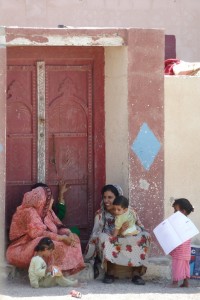 The Sultanate of Oman does not provide the same level of protection to children born to unmarried parents as it does to others. They are marginalised from society.
The Sultanate of Oman does not provide the same level of protection to children born to unmarried parents as it does to others. They are marginalised from society.
To give birth out of wedlock is a crime and leads mothers with unwanted children to avoid getting in touch with competent authorities out of fear of legal sanctions against them. These children are therefore often abandoned.
Furthermore, child adoption goes against the principles of the Sultanates’ Islamic law. So, it is often state institutions that take control of these children who will never be able to grow up within society nor be fully integrated into it.
Statelessness and the right to an identity
Children born of an Omani mother and foreign father do not have the right to an Omani nationality. This practice discriminates against women and children. Moreover, if the child does not obtain the nationality of his father, he becomes stateless and will not be entitled to the same protection as an Omani child.
Despite a formal ban on corporal punishment at school, custom allows for it to be used where useful to “raise” the child.
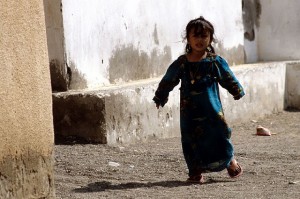 Children are thus still often subjected to poor physical or psychological treatment, even sexual abuse, within institutions of the state as well as within their own family.
Children are thus still often subjected to poor physical or psychological treatment, even sexual abuse, within institutions of the state as well as within their own family.
This violence is the result of attitudes deriving from traditions and the absence of dialogue between adults and children. The population is not informed of the negative impact of such treatment on children and their development, nor made aware of non-violent means of discipline and education.
Despite efforts made by the Sultanate in recent years, problems of malnutrition and iron deficiencies continue. Even with a GDP of $18,000 per person in 2010, 9% of children under 5 are moderately to seriously underweight and 10% moderately to seriously physically underdeveloped over the period 2006-2010.
Children living in rural areas and children of foreign nationals are subjected to discrimination in terms of access to healthcare and education. This is despite the efforts of the Sultanate to allow access to education in remote areas, including for nomadic peoples.
The question of disabled children is equally worrying. The country has attempted to integrate them into ordinary schools and also specialised institutions. However, these establishments are situated in or around the capital, rendering access difficult and thus not allowing for real integration of disabled children.
Finally, the population is not sufficiently well informed about the HIV/AIDS virus. Child sufferers, the majority of whom already find themselves orphaned by the disease, are very often marginalised and given up by their families.
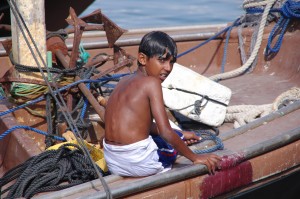 Despite support by the Sultanate for instruments of protection against child labour, it still persists unofficially in some sectors such as agriculture, fishing or family businesses.
Despite support by the Sultanate for instruments of protection against child labour, it still persists unofficially in some sectors such as agriculture, fishing or family businesses.
Children often end up doing work that is dangerous for their health and their personal safety.
At the same time, they suffer restrictions on their freedom of movement and excessively long working days. They may be undernourished and be the object of physical and sexual abuse. Young girls employed as domestic help constitute the most vulnerable category of workers.
A typical example of child labour in Oman is at camel races where children were often employed. The Sultanate today asserts to have eradicated this practice, but the lack of inspections calls this claim into question. Most notably foreign children are still used as jockeys because of their light weight and are therefore more profitable.
Protection of children from dangers posed by traffic
In Oman, one child dies every four days on the roads. Many are seriously injured, even disabled for life due to the very high road accident rate for the population density and the number of children who drive without a licence.
Even though bills are apparently in the process of being drafted, not only to establish special tribunals to hear cases to prosecute children but also to increase the minimum age of criminal responsibility, many children have been condemned to serve sentences in prison.
Complaints concerning physical and sexual violence are not sufficiently registered or investigated by the police service. The staff are not trained well enough to manage this type of situation and the population is not encouraged to report attacks.
Environment
 Despite the undoubted interest the Sultanate has in the protection of the environment, water pollution (mainly due to effluents from the oil industry), the problem of waste management and air pollution all have an impact on the future prospects of Omani children.
Despite the undoubted interest the Sultanate has in the protection of the environment, water pollution (mainly due to effluents from the oil industry), the problem of waste management and air pollution all have an impact on the future prospects of Omani children.


